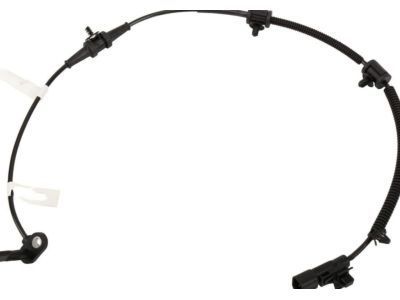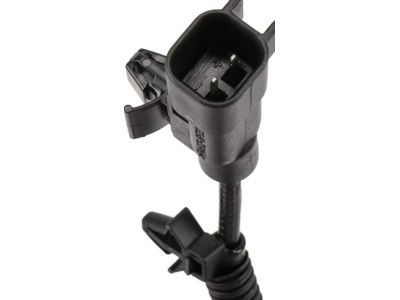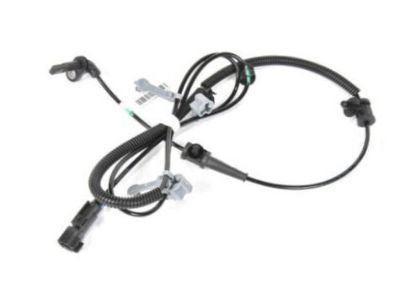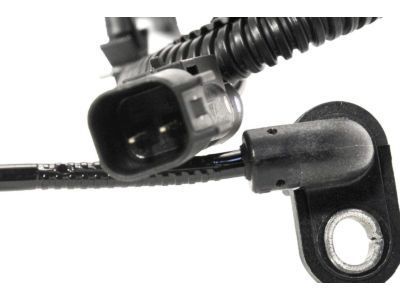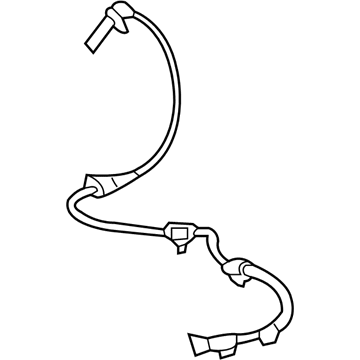
My Garage
My Account
Cart
Genuine Chevrolet Malibu ABS Sensor
ABS Wheel Speed Sensor- Select Vehicle by Model
- Select Vehicle by VIN
Select Vehicle by Model
orMake
Model
Year
Select Vehicle by VIN
For the most accurate results, select vehicle by your VIN (Vehicle Identification Number).
11 ABS Sensors found
Chevrolet Malibu Sensor Assembly, Front Whl Spd
Part Number: 23483145$30.55 MSRP: $57.61You Save: $27.06 (47%)Ships in 1-2 Business DaysChevrolet Malibu Sensor Assembly, Rear Wheel Speed
Part Number: 23483152$33.58 MSRP: $63.35You Save: $29.77 (47%)Ships in 1-2 Business DaysChevrolet Malibu Sensor Assembly, Rear Wheel Speed
Part Number: 23483151$34.20 MSRP: $64.50You Save: $30.30 (47%)Ships in 1-2 Business DaysChevrolet Malibu Sensor Assembly, Front Whl Spd
Part Number: 84613188$11.43 MSRP: $21.56You Save: $10.13 (47%)Ships in 1-2 Business DaysChevrolet Malibu Sensor Assembly, Rear Whl Spd
Part Number: 84613191$9.95 MSRP: $18.78You Save: $8.83 (48%)Ships in 1-2 Business DaysChevrolet Malibu Sensor Assembly, Front Whl Spd
Part Number: 84613189$19.27 MSRP: $36.36You Save: $17.09 (47%)Ships in 1-3 Business DaysChevrolet Malibu Sensor Assembly, Rear Whl Spd
Part Number: 84700119$8.97 MSRP: $16.30You Save: $7.33 (45%)Ships in 1-3 Business DaysChevrolet Malibu SENSOR ASM-RR WHL SPD
Part Number: 42841240$10.33 MSRP: $18.78You Save: $8.45 (45%)Ships in 1-2 Business DaysChevrolet Malibu SENSOR ASM-RR WHL SPD
Part Number: 42841239$19.22 MSRP: $34.94You Save: $15.72 (45%)Ships in 1-2 Business DaysChevrolet Malibu SENSOR ASM-FRT WHL SPD
Part Number: 42810587$11.43 MSRP: $21.56You Save: $10.13 (47%)Ships in 1-2 Business DaysChevrolet Malibu SENSOR ASM-FRT WHL SPD
Part Number: 42882677$20.00 MSRP: $36.36You Save: $16.36 (45%)Ships in 1-2 Business Days
Chevrolet Malibu ABS Sensor
The ABS Sensor is a part of Chevrolet Malibu cars and is mainly concerned with the anti-lock braking system of the car so as to stop the wheel from locking when the brakes are applied. Through feeding the computer in the car with actual data of the wheel speed, the ABS Sensor allows the system to regulate hydraulic pressure to ensure safe and controllable stopping distance and particularly in case of a low friction surface. Chevrolet Malibu models are equipped with different types of ABS Sensors, commonly they use a magnet with a Hall effect sensor or a toothed wheel with an electromagnetic coil. These sensors produce voltages in proportion to the changes in magnetic field that occurs due to rotation of the wheel. But, at the low rates, it may fail to give accurate readings and therefore affect the information transmitted to the ABS controller. In general, it can be concluded that the ABS Sensor is crucial for providing the optimal driving performance with the Chevrolet Malibu vehicles.
Each OEM Chevrolet Malibu ABS Sensor we offer is competitively priced and comes with the assurance of the manufacturer's warranty for the part. Furthermore, we guarantee the speedy delivery of your orders right to your doorstep. Our hassle-free return policy is also in place for your peace of mind.
Chevrolet Malibu ABS Sensor Parts Questions & Experts Answers
- Q: How Should You Diagnose and Repair Issues with the Anti-Lock Brake System and ABS Sensor on Chevrolet Malibu?A:The anti-lock brake system works to retain vehicle manoeuvrability, directional control and best straight line stopping distance in all types of roadway surface and severe brake conditions by selectively applying pressure to the brake cylinder of every wheel in relation to its rotational speed to avoid wheel locking. It consists of three main components: A number of components including the wheel speed sensors, the Electronic Control Unit (ECU) and the Brake Pressure Modulation Valve (BPMV). There are four wheel-speed sensors which send variable voltage signals to the control unit to decide whether a wheel is about to lock up and signals the hydraulic unit of the necessary pressure level. A symbol named "ABS" appears in the car dashboard that flashes to tell its owner that there's a problem, those problems can be diagnosed by physically checking the wiring harness of the ABS that connects to the car's control module and looking for signs of damage near each wheel. Care should be taken so that the ignition is turned OFF before tackling electrical leads. Traction control is also part of some cars, which uses the ABS system and relays it to the engine fuel maps based for wheel rotation and prevents wheel spinning. If a dashboard warning light stays on, ABS requires service; initial diagnostics are viewing brake fluid level, connecting terminals and wires, checking fuses, and inspecting wiring harnesses. In case of complications, the item ought to be diagnosed and corrected by a professional technician. To remove the wheel speed sensor information or replace it, some steps to follow are as follows; the ignition to off, the lug nuts loose, the car should be raised, and the wheel should be detached. Disconnect the wiring of the sensor, on remove the bolt holding the sensor and slowly pull it off. Installation on the other hand is done in the reverse order accompanied by the tightening of all the screws.
